 France. Armored Cruiser built 1904-1908, service until 1937.
France. Armored Cruiser built 1904-1908, service until 1937.WW1 French Cruisers
Sfax | Tage | Amiral Cecille | D'Iberville class | Dunois class | Foudre | Davout | Suchet | Forbin class | Troude class | Alger class | Friant class | Linois class | Descartes class | D'Assas class | D’Entrecasteaux | Protet class | Guichen | Chateaurenault | Chateaurenault | D'Estrées class | Jurien de la Graviere | Lamotte-Picquet classDupuy de Lome | Amiral Charner class | Pothuau | Jeanne d'Arc | Gueydon class | Dupleix class | Gloire class | Gambetta class | Jules Michelet | Ernest Renan | Edgar Quinet class
Ernest Renan was the penultimate French armored cruiser, launched the same year as HMS Dreanought and base for the last Edgar Quinet class. In August 1914, she took part in the hunt for the battlecruiser SMS Goeben, joined the Adriatic blockade of the Austro-Hungarian Navy and the Battle of Antivari, the seizure of Corfu (January 1916) and the 1919 allied intervention ofthe Russian Civil War in the Black Sea. She stayed first line until retrograded as a training ship in 1927 and sunk as target ship in 1931. #marinenationale #frenchnavy #ernestrenan #armouredcruiser
Design of the class

Ernest Renan was initially planned to be part of the Leon Gambetta class, but naval architect Emile Bertin constantly modified the design. This resulted in two new ships, the armoured cruiser Jules Michelet and after tinkering more, he stretched out design in an attempt to increase speed, resulting in the next Ernest Renan (named after the philosopher and philologist Ernest Renan), last before the Edgar Quinet pair, the very last French armoured cruisers at the dreadnough age.
Ernest Renan was built at Penhoët shipyard (Chantiers de l’Atlantique) in Saint-Nazaire. Her keel was laid down on 21 October 1903. She was launched on 9 April 1906, a month after HMS Dreadnought (February, 10). During her launch, the general manager of Schneider-Creusot, which provided the armor, Maurice Geny, died in a falling incident. Fitting-out work was completed by early 1909.
Hull and general design
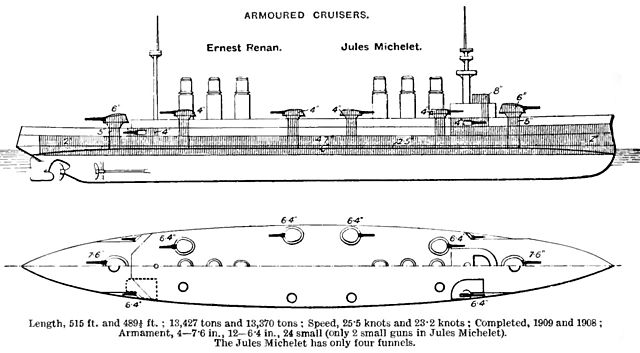
Ernest Renant was indeed longer than Jules Michelet: She measured 159 meters (521 ft 8 in) overall (versus 146.53(480 ft 9 in)), with however the same beam at 21.4 meters (70 ft 3 in) and slightly lighter draft at 8.2 meters (26 ft 11 in) (versus 8.41 m (27 ft 7 in)). She displaced more of course at 13,644 metric tons (13,429 long tons) versus 13,105 t (12,898 long tons) standard for Jules Michelet. Her crew numbered 750 in peacetime and up to 824 officers and enlisted men in WW1.

Ernest Renan in 1912 – the blueprints.com
Her general outlook was about the same as Jules Michelet, and both were considered by many authors one and a same class. She had six funnels and two straight masts all far apart, making for a quite unique an recoignisable profile comparted to Jules michelet, which had four funnels like the Leon Gambetta and Gloire classes. Her long hull ended in a narrow poop and narrow prow with limited sheer, limited tumblehome, and turreted guns all along. She only had four casemated secondary guns fore and aft behinf recesses, a tall conning tower forward with the bridge above, and a thick military mast forward supporting one large fighting top (reached by internal helicoidal stair) with four light guns and two successive spotting tops and projectors. There was also a developed superstructure aft supporting projectors and light guns on two levels. Between the funnels were installed tall air scoops. The boats were all grouped aft of the bridge, served by two booms and two large gooseneck cranes amidships.
Like all French vessels of the time she had three shafts. The stretched hull enabled the addition of extra boilers. Her armour scheme was the same as Jules Michelet but in sme details, with the turtledeck surrounded by a tall belt (limited however underwater), having an additional strake forward, up on two levels, to the casemate of the battery deck. Fortunately detailed plans had been released from the archives.
Powerplant
Unlike the Gambettas having up to 28 boilers of various types combined with VTE steam engines, Jules Michelet combined a triple shaft arrangement with three vertical triple expansion steam engines, fed by 28 Guyot du Temple boilers which made for 30,000 ihp (22,371 kW) instead of 27,500 PS (20,226 kW) but only gained half a knot at 22.5 knots (41.7 km/h; 25.9 mph) versus 22 knots. She also carried 2,070 tonnes of coal versus 2065 tonnes (7,500 nmi (13,900 km; 8,600 mi) range at 10 knots (19 km/h; 12 mph).

Like her near-sister Ernest Renan had three vertical triple-expansion steam engines rated for a total of 37,000 indicated horsepower (28,000 kW) versus 30,000 hip, a gain of 7000 sh thanks to additional boilers. Insead of 28 Guyot du Temple she had no less than 42 Niclausse boilers, truncated into 7 exhausts for each funnel. They were grouped into two well separated boiler rooms separated by the amidships gun turrets and magazines, explaining why they were so far apart. This also was a safety in case of torpedo hit. Emile Berrtin’s goal was a greater speed, and she was indeed designed to reach 23 knots (43 km/h; 26 mph), one knot faster than Michelet. On trials she reached 24.4 knots (45.2 km/h; 28.1 mph) in fact, from 37,685 ihp (28,102 kW).
Renan initially carried 2,260 tonnes (2,220 long tons) of coal (versus 2070 for Michelet) and this was later reduced to 1,870 tonnes (1,840 long tons), still for a range of 5,100 nautical miles (9,400 km; 5,900 mi) at 10 knots (19 km/h; 12 mph) versus 7,500 nm at the same speed for Michelet. This could show us she was a bad steamer, whereas the next Quinet class, which had the exact same machinery, were capable 10,000 nautical miles (19,000 km; 12,000 mi). This should throw a serious pinch of salt on these declared figures. Only explanation is that Renan’s VTE engines, from St. Nazaire, were less efficient.
Protection
The armor scheme was about the same, here are the stats layed here:
Gambettas: Belt: 70-150, turrets: 200, barbettes 100-180, secondary turrets 130-165, barbettes 65-130, casemates: 140, lower deck 45-65 and main deck 35, CT 200mm
Michelet: Belt: 70-150, turrets: 200, barbettes 100-180, secondary turrets 130-165, barbettes 65-130, casemates: 140, lower deck 45-65 and main deck 35, CT 200mm
Renan: Belt: 60-150, turrets: 200, barbettes: 100-180, secondary turrets: 130-165, barbettes 65-130, casemates: 140, lower deck: 45-65, main deck: 35, CT: 200mm
Thius shows immediately that Michelet and Renan had the exact same armour scheme, apart for the belt’s lighter tapering (60 mm versus 70 mm)
Belt: Renan’s waterline armored belt thus reached 152 millimeters (6 in) amidships, extending from 1.35 meters (4 ft 5 in) below the waterline and 2.31 meters (7 ft 7 in) above it.
-The belt was tapered down to 102 millimeters (4.0 in) forward of the foremast, 84 millimeters (3.3 in) aft of the mainmast. It ended short of the stern, enclosed by a 89-millimeter (3.5 in) bulkhead.
-The upper belt strake ranged from 36 to 58 millimeters (1.4–2.3 in), extending to the upper deck.
The turtle deck reached 46 millimeters (1.8 in) on its flat section but 66 millimeters (2.6 in) on its outer edges and 71 millimeters (2.8 in) over the rudder to protect the mechanism.
-Bertin’s signature was Renan’s watertight internal cofferdam. It was filled with cellulose and ran all the way between the upper and main decks.
-The main gun turrets had conical turrets protected by well sloped 203-millimeter (8 in) upper sides, 51-millimeter (2 in) roofs
-The secondary turrets were also conical and protected by 170-millimeter (6.5 in) slopes, with a 30-millimeter (1.2 in) roof.
-Main turrets barbettes ranged from 102 to 183 millimeters (4 to 7.2 in), going deep below the belt.
-Secondary Barbettes ranged from 64 to 132 millimeters (2.5 to 5.2 in).
-The conning tower had 203 mm thick walls (200 mm).
Armament
In short, Renan had two twin 194mm/50 M1902, twelve 165mm/45 M1893-96M, sixteen 65mm/50 M1902, eight 47mm/50 M1902, two 37mm/20 M1885, and two 450mm TT (sub, beam).

Her main armament comprised four 50-caliber Canon de 194 mm Modèle 1902 guns in two twin gun turrets fore and aft.
Her secondary armament comprised twelve 45-cal. Canon de 164 mm Modèle 1893-96 guns. Eight in single turrets, main deck, four in casemates, battery deck below.
Light artillery to fight off TBs comprised no less than sixteen 65-millimeter (2.6 in) guns, eight 47-millimeter (1.9 in) Hotchkiss guns.
She had two submerged 450-millimetre (17.7 in) torpedo tubes amidships.
Later in wartime, her only modification was to have lighter guns replaced by anti-aircraft guns, and at the end of the war, two more AA gins fitted on all three aftermost turret’s roofs. In the 1920s she also tried an observation balloon, anchored close to the bridge, so she lost the militayr mast here and associated light fighting top guns. Her armament as TS is unclear.
194 mm/50 (7.6 in) M1902

On the cruiser Waldeck Rousseau.
These were similar in caliber, but more powerful models than those carried in the earlier ships. The 50 caliber (instead of the 194/45 Modèle 1893–1896) had far better characteristics. It was shared with the cruisers Renan, the two Quinet class and the Liberté class battleships.
Characteristics: 15 t (17 short tons), 10.1 meters (33 ft) long, barrel 9.7 meters (32 ft) 50 caliber
Shell: 89.5 kg (197 lb) separate-loading, bagged charge HE/AP mv 940 m/s (3,100 ft/s)
Elevation: -6° to +15°, traverse: -150° to +150°
Rate of fire: 2 rpm
Best range: 26 km (16 mi) at 45°

164mm/50 M1902
Weight: 33,470 lbs. (15,180 kg), 398.0 in (10.110 m) bore 381.9 in (9.700 m)
Rate Of Fire: About 2 rounds per minute
Round: APC M1902 – 189.6 lbs. (86 kg) or SAPC M1902 – 194.0 lbs. (88 kg), separate, bagged, mv 3,117 fps (950 mps)
Range at 15° (max turret): 12,580 yards (11,500 m)
More on navweaps
QF 3 Pdr (47 mm) Hotchkiss M1885
Twenty Four in all, spread between casemated positions along the hull,
Specs: 240 kg (530 lb), 2 m (6 ft 7 in) barrel 1.8 m (5 ft 11 in) 40 caliber
Shell: Fixed QF 47 × 376 mm R 3 kg (6.6 lb), mv 571 m/s (1,870 ft/s)
Vertical sliding-wedge breech, 30 rpm, Range 5.9 km (3.7 mi) at +20°

1906 appearance (pinterest)

Old author’s rendition
⚙ specifications |
|
| Displacement | 13,105 t (12,898 long tons) standard |
| Dimensions | 146.53x 21.41 x 8.41 m (480 ft 9 in x 70 ft 3 in x 27 ft 7 in) |
| Propulsion | 3 shafts VTE, 28 Guyot du Temple boilers: 30,000 ihp (22,371 kW) |
| Speed | 22.5 knots (41.7 km/h; 25.9 mph) |
| Range | 2,070 tonnes of coal, 6600 nm/10 kts |
| Armament | 2×2 194 mm M1902, 12× 164 mm M1893-96M, 24× 47 mm, 2× 450 mm sub TTs |
| Protection | 71–152 mm belt, 200 mm main, 130–170 mm sec. turrets, casemates 140 mm, CT 200 mm |
| Crew | 728 |
Career of Ernest Renan

Ernest Renant was commissioned in February, and after a few months in i,nitial training with the Atlantic fleet, she was reassigned to the cruiser squadron of the Mediterranean Fleet, homeported to Toulon. In April 1912 she was reassigned to the 1st Light Squadron (Adm. Boué de Lapeyriere’s reorganization) in the same unit as her near-sisters, the two Edgar Quinet-class cruisers. Given their tonnage, speed and heavy armament, they were quite a formidable force, even if facing a modern batlecruiser and in fact, became a substitute for it as 1912 French planned Battlecruisers, notably by Engineer Gilles, never were ordered. This situation nearly happened:
Indeed as World War I reupted in August 1914, Ernest Renan and the two Edgar Quinet plus Jules Michelet were reassigned into the First Light Division. They were tasked to find and destroy the the German battlecruiser SMS Goeben accompnied by the light cruiser SMS Breslau. This was the Kaiserliches Marine’s Mediterranean squadron, command by Admiral Wilhelm Souchon. Based in Dar El Salaam, Egypt he was found trapped by the declaration of war, risking destruction wether sailing west or east. East, its Suez transit, to join Von Spee’s Pacific fleet, could be blocked by the British in the Suez Canal, whereas the Austro-Hungarian Navy ‘sPola base seemed a more realistic option, Italy’s position was still uncertain and the French were likely to sent patrols in the area. Last, the west via Girbraltar to join the Hochseeflotte. This was perhaps the most dangerous option, passing through French lines of communication and next, British-Held Gibraltar. And there was the question of coal, from Dar Es Salaam to Wilhelmshaven. Souchon, soon shadowed by the British, still not at war, risked a bold deception, acting as it they will attack the French North African troopship lines, while his squadron will reverse course and head for the Dardanelles instead.
Meanwile, the First Light Division, escorted by a flotilla of twelve destroyers, headed for Philippeville on 4 August, as Souchon was reported, bombarding the port on the 3rd. The attack went with reports suggesting the Germans would try to break into the Atlantic. This had the French high command sending the First Light Division further west to Algiers, attempting to block the path of the Germans. But they were never there.

Instead, fearing the Royal Navy would also be mobilized in their path from Malta and Alexandria, escaped to Constantinople. The French troop transports were never in jeopardy. After it was learned about the fater Souchon’s squadron, which passed onto Ottoman control, now a belligerent, Boué de Lapeyrière ordered the 1st Light Division to block the path of the Austro-Hungarian Navy, enclosing the the Adriatic Sea. Ernest Renan thus joined the blockade just being organized close to Brindisi. Admiral Augustin Boué de Lapeyrère assembled the fleet in the night of 15 August to conducted at dawn, a major sweep into the Adriatic. Soon his destroyers spotted the Austro-Hungarian cruiser SMS Zenta. This became the Battle of Antivari in which Zenta, caght by the 1st Light Div., was sunk, with no losses on the French side. However soon U-Boats were spotted and this was enough to order a wise withdrawal (as events will show later) as the threat was serious.

Pinterest – Renan painted by Anthony Cowland, Art Reserve.
On 8 January 1916, Ernest Renan, Edgar Quinet, Waldeck-Rousseau and Jules Ferry carried together a contingent of Chasseurs Alpins (mountain troops) in order to seize the Greek island of Corfu. Greece at the time, like Italy prior to April 1915, still leaned towards the central Empire. The French were pivotal into forcing the country into the entente’s size and started to seize some strategic assets in the area. Corfu was indeed the east gate island to the Adriatic and could become an important base to completely seal the blocus. The cruisers landed their troops ashore in the night of 10 January, under protestation of Greek officials, but offering no resistance. The country was indeed strongly divided on the question on joining one or the other side, but the majority leaned towards the Entente.
On 22 December, Ernest Renan collided in bad weather and fog with the Italian steamer Helvetia, while en route to Salonika. This happened as she was underway at twenty knots. She rammed her and cut her in two. There were, according to the press, 15 people which drawn but 115 were rescued. She saw little action after this, remaining in the Mediterranean’s Adriatic blockade squadron until November 1918 (searching for logs).
Shortly after the armistice, allied warships were gathered to address the new situation in the east. After the 1917 revolution, a civil war started opposing the Bolscheviks and “white Russians” still loyal to the Tsar. The West (including the US and Japan) decided to help the latter. A Franco-British squadron, like in the old days of the Crimean war, sailed for the same area of the Black Sea and this became a large-scale intervention against the Bolsheviks. Ernest Renan was among the first Allied warships to enter the area, arriving in Novorossiysk alongside the cruiser HMS Liverpool and two torpedo boats, on 23 November 1918, a few days after the armistice.
She remained on station, taking part in vaious support operations in 1919 and 1920. In 1919, with Décidée and Bambara, she participated in the defense of Syria. On 18 March 1921, the situation became desperate for the “whites”. East of the Black sea, she evacuated the Democratic Republic of Georgia’s government to France, after the Red Army invaded the country. She transported from Batumi to Constantinople Yektime Takhaishvili and the Georgian national treasure as well. Crimea also fell and the last remnants were evacuated in the Pacific.
Back to France, Ernest Renan’s mainmast was removed and she was modified for towing a balloon for observation with modern anti-aircraft guns installed on the roofs of her aft 164 mm gun turrets. Her active career changed again as she was modified as a gunnery training ship in drydock in Toulon, and acted as TS from 1927 to 1929 under command of Émile Muselier, future commander of the Free French Naval Forces in WW2. In 1931 she was stricken from the register, and placed in reserve. Instead of being sold for BU, it was decided to have her expended as target ship, for aircraft and naval gunners. Sources diverged about her fate. It seems she served as such until 3 mai 1936. In other sources she was sunk by aircraft in 1939 or even 1940.

Read More/Src
Books
Callo, Joseph F.; Wilson, Alastair (2004). Who’s Who in Naval History: From 1550 to the Present. Routledge.
Chamberlin, William Henry (2014). The Russian Revolution, Volume II: 1918-1921: From the Civil War to the Consolidation of Power. Princeton University Press
Chesneau, Roger & Kolesnik, Eugene M., eds. (1979). Conway’s All the World’s Fighting Ships 1860–1905. Greenwich: Conway Maritime Press.
Corbett, Julian Stafford (1920). Naval Operations: To The Battle of the Falklands, December 1914.
Dai, Wei (September 2020). “A Discussion on French Armored Cruiser Identification: From the Gueydon Class to the Edgar Quinet Class”. Warship International.
Earle, Ralph, ed. (1912). Proceedings. 38. Annapolis: United States Naval Institute.
Gardiner, Robert & Gray, Randal, eds. (1985). Conway’s All the World’s Fighting Ships 1906–1921.
Ingersoll, R. E. (1898). “Organization of the Fleet for War”. Proceedings of the United States Naval Institute.
Jordan, John & Caresse, Philippe (2019). French Armoured Cruisers 1887–1932. Barnsley, UK: Seaforth Publishing.
Lauzanne, Stéphane (1918). Fighting France. Translated by John L. B. Williams. New York: D. Appleton & Co.
“New York Times Index: A Masterkey to All Newspapers”. The New York Times. Vol. VI, no. 4. New York. 1916.
Silverstone, Paul H. (1984). Directory of the World’s Capital Ships. New York: Hippocrene Books.
Smele, Jonothan D. (28 July 2016). The Russian Civil Wars 1916–1926. Hurst & Company.
Sondhaus, Lawrence (2014). The Great War at Sea: A Naval History of the First World War. Cambridge University Press.
Links
on forum.pages14-18.com
navypedia.org ernest_renan
on worldnavalships.com
https://www.battleships-cruisers.co.uk/ernest_renan.htm
http://le.fantasque.free.fr/php/ship.php?page_code=renan
http://le.fantasque.free.fr/php/ship.php?page_code=renan
en.wikipedia.org/ Renan
plans on 3dhistory.de/
https://www.shipsnostalgia.com/media/ernest-renan.147582/
https://www.servicehistorique.sga.defense.gouv.fr/ark/1022404
Photos on ECPAD
on gallica.bnf.fr/
https://www.militaer-wissen.de/armored-cruiser-ernest-renan/?lang=en
http://warshipsresearch.blogspot.com/2017/06/french-armoured-cruiser-ernest-renan.html
on fr.wikipedia.org/
on commons.wikimedia.org/


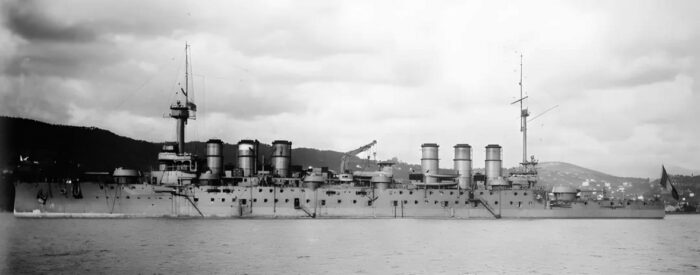
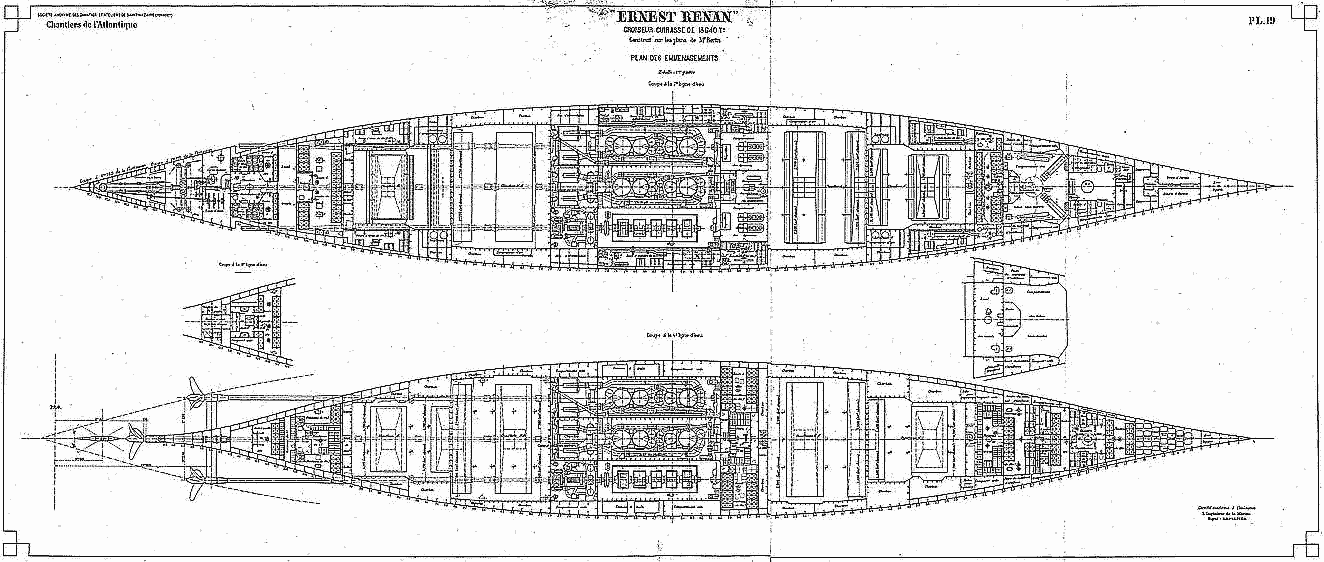












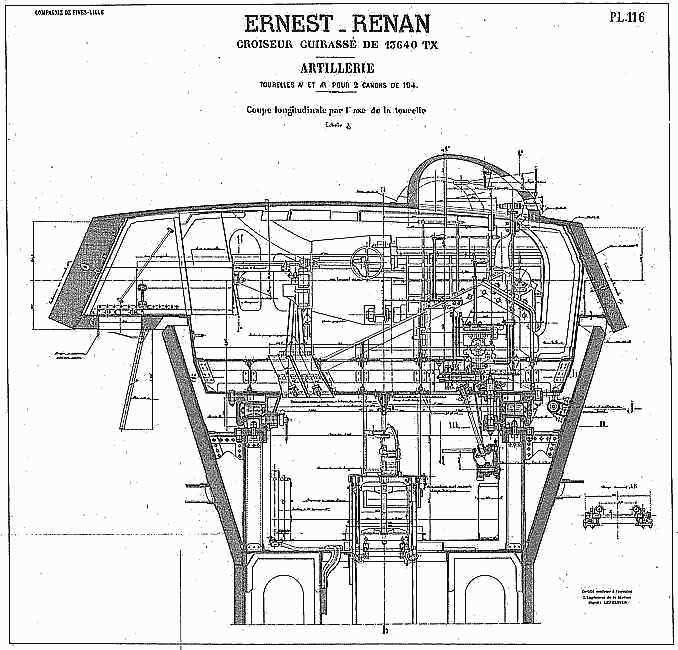
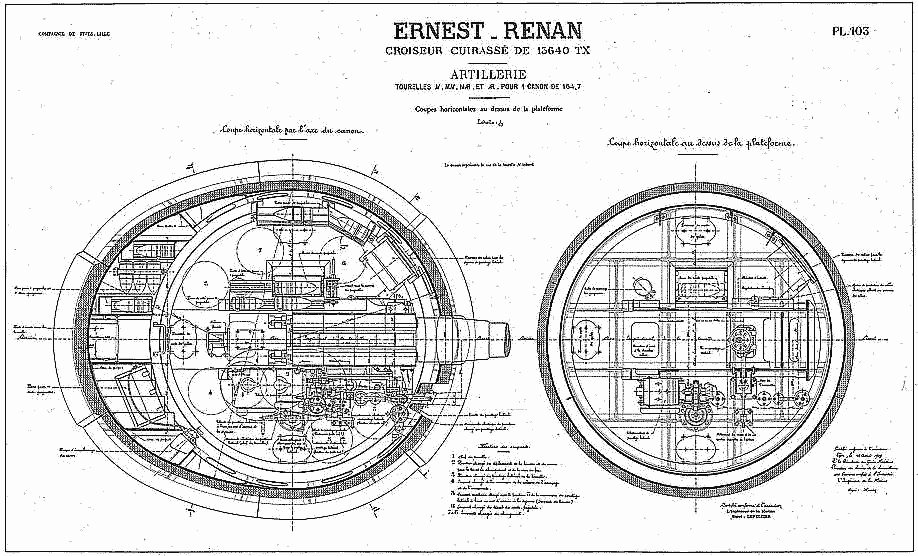


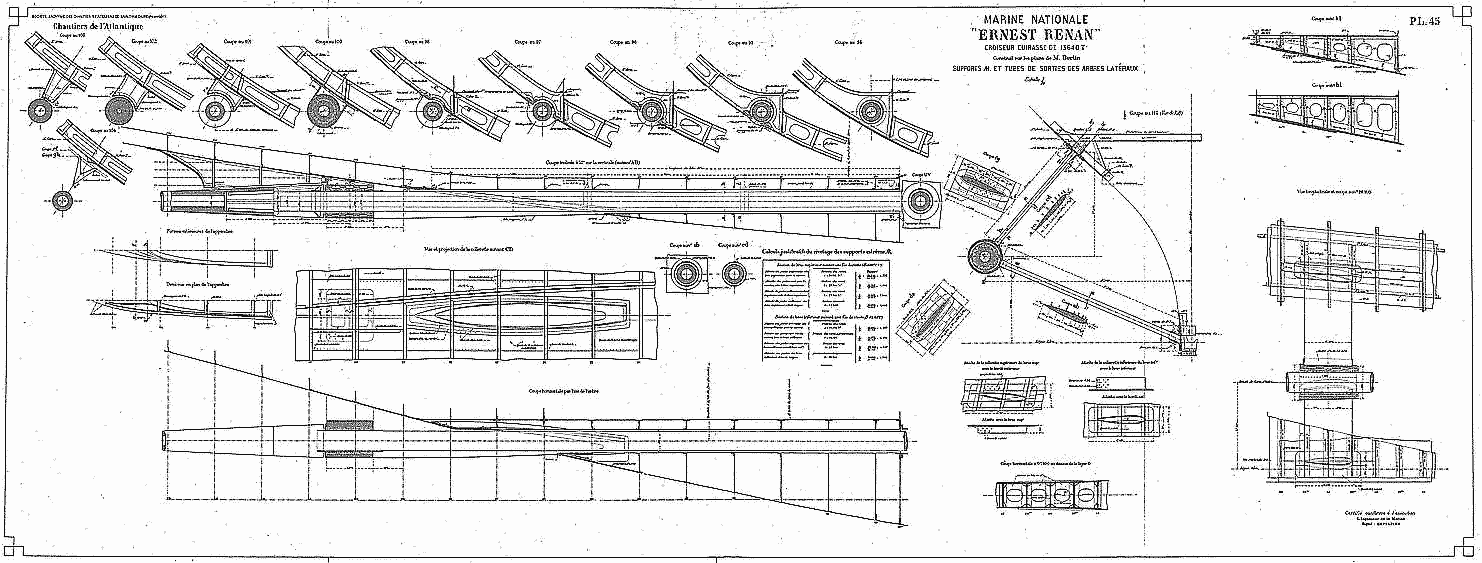
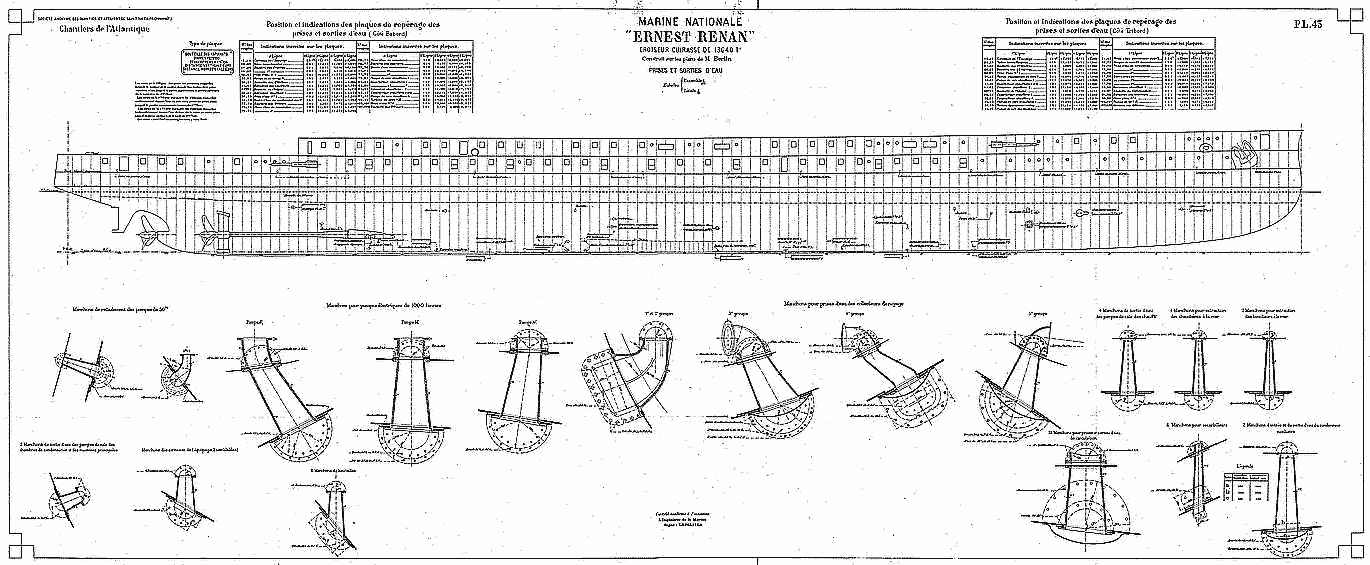





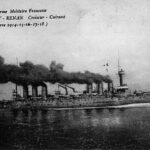
 Latest Facebook Entry -
Latest Facebook Entry -  X(Tweeter) Naval Encyclopedia's deck archive
X(Tweeter) Naval Encyclopedia's deck archive Instagram (@navalencyc)
Instagram (@navalencyc)





 French Navy
French Navy Royal Navy
Royal Navy Russian Navy
Russian Navy Armada Espanola
Armada Espanola Austrian Navy
Austrian Navy K.u.K. Kriegsmarine
K.u.K. Kriegsmarine Dansk Marine
Dansk Marine Nautiko Hellenon
Nautiko Hellenon Koninklije Marine 1870
Koninklije Marine 1870 Marinha do Brasil
Marinha do Brasil Osmanlı Donanması
Osmanlı Donanması Marina Do Peru
Marina Do Peru Marinha do Portugal
Marinha do Portugal Regia Marina 1870
Regia Marina 1870 Nihhon Kaigun 1870
Nihhon Kaigun 1870 Preußische Marine 1870
Preußische Marine 1870 Russkiy Flot 1870
Russkiy Flot 1870 Svenska marinen
Svenska marinen Søværnet
Søværnet Union Navy
Union Navy Confederate Navy
Confederate Navy Armada de Argentina
Armada de Argentina Imperial Chinese Navy
Imperial Chinese Navy Marinha do Portugal
Marinha do Portugal Mexico
Mexico Kaiserliche Marine
Kaiserliche Marine 1898 US Navy
1898 US Navy Sovietskiy Flot
Sovietskiy Flot Royal Canadian Navy
Royal Canadian Navy Royal Australian Navy
Royal Australian Navy RNZN Fleet
RNZN Fleet Chinese Navy 1937
Chinese Navy 1937 Kriegsmarine
Kriegsmarine Chilean Navy
Chilean Navy Danish Navy
Danish Navy Finnish Navy
Finnish Navy Hellenic Navy
Hellenic Navy Polish Navy
Polish Navy Romanian Navy
Romanian Navy Turkish Navy
Turkish Navy Royal Yugoslav Navy
Royal Yugoslav Navy Royal Thai Navy
Royal Thai Navy Minor Navies
Minor Navies Albania
Albania Austria
Austria Belgium
Belgium Columbia
Columbia Costa Rica
Costa Rica Cuba
Cuba Czechoslovakia
Czechoslovakia Dominican Republic
Dominican Republic Haiti
Haiti Hungary
Hungary Honduras
Honduras Estonia
Estonia Iceland
Iceland Eire
Eire Equador
Equador Iran
Iran Iraq
Iraq Latvia
Latvia Liberia
Liberia Lithuania
Lithuania Mandchukuo
Mandchukuo Morocco
Morocco Nicaragua
Nicaragua Persia
Persia San Salvador
San Salvador Sarawak
Sarawak Uruguay
Uruguay Venezuela
Venezuela Zanzibar
Zanzibar Warsaw Pact Navies
Warsaw Pact Navies Bulgaria
Bulgaria Hungary
Hungary

 Bundesmarine
Bundesmarine Dutch Navy
Dutch Navy Hellenic Navy
Hellenic Navy Marina Militare
Marina Militare Yugoslav Navy
Yugoslav Navy Chinese Navy
Chinese Navy Indian Navy
Indian Navy Indonesian Navy
Indonesian Navy JMSDF
JMSDF North Korean Navy
North Korean Navy Pakistani Navy
Pakistani Navy Philippines Navy
Philippines Navy ROKN
ROKN Rep. of Singapore Navy
Rep. of Singapore Navy Taiwanese Navy
Taiwanese Navy IDF Navy
IDF Navy Saudi Navy
Saudi Navy Royal New Zealand Navy
Royal New Zealand Navy Egyptian Navy
Egyptian Navy South African Navy
South African Navy






























 Ukrainian Navy
Ukrainian Navy dbodesign
dbodesign